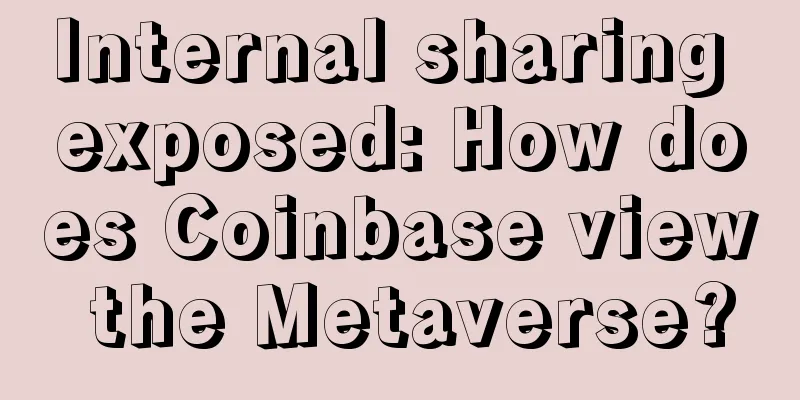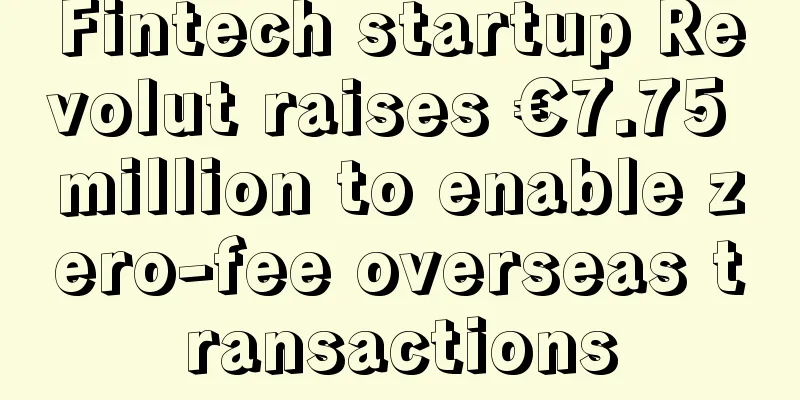Internal sharing exposed: How does Coinbase view the Metaverse?

|
By: Brian Armstrong, Coinbase Founder and CEO, and Alex Reeve, Coinbase Identity Product Lead Everyone's been talking about the Metaverse these days. Early-stage Metaverse platforms are selling virtual land for millions of dollars, billions of dollars are pouring into Metaverse startups, and Mark Zuckerberg recently renamed Facebook to Meta to emphasize its focus on building the Metaverse. The term “metaverse” isn’t a recent one. Author Neal Stephenson first coined the term in his 1992 novel Snow Crash. But as technology advances and we spend more time online, more and more people are wondering what’s next — and how the future will radically change both the digital and physical worlds. Recently, our team put together an internal report on the Metaverse, including who is developing the Metaverse and how cryptocurrency will help make it a reality. I think this internal sharing was done well, so I’m sharing the content of this sharing here. Defining the MetaverseAt Coinbase, our thinking about the Metaverse is heavily influenced by venture capitalist and author Matthew Ball (you can find his work here). Like Matt, we define the Metaverse as: The future of the Internet: a massive, persistent, interactive, and interoperable real-time platform consisting of interconnected virtual worlds where people can socialize, work, trade, entertain, and create. The earliest version of the Internet, Web1, was about accessing static web pages, Web2 was about interactive social experiences in closed ecosystems, and Web3 will be about digital ownership in an open and decentralized environment. Web3 will eventually evolve into the Metaverse. In its most complete form, the Metaverse will be a series of decentralized, interconnected virtual worlds with fully functional economic systems where people can do anything they can do in the physical world. Importantly, the Metaverse is not games (games are just an activity you can do in the Metaverse), it is not VR (VR is just a way to interact with the Metaverse), and it is not Web3 (Web3 is just an early form of the Metaverse). Below we apply the definition of the metaverse to a real-world example. Elements of the MetaverseWhile the full metaverse is still a long way off, it will be built on top of what we are currently creating. A hypothetical future metaverse “stack” Like the internet today, the Metaverse will rely on hardware and infrastructure, tools, standards, and regulatory frameworks — much of which has yet to fully emerge. But unlike today’s Internet, there won’t be just one Metaverse. There will be many Metaverses, and they will be interconnected. That’s why any Metaverse must be trustless (meaning people can interact directly without going through an intermediary) and permissionless (meaning anyone can participate without authorization from a governing body). To achieve this, the Metaverse will rely on blockchain to transfer identities and ownership between virtual worlds, verify them through proofs, and establish payment channels allowing people to buy, sell, and earn income in the decentralized economy. Who is currently creating the Metaverse?While we can’t yet build anything close to a complete Metaverse, different companies and organizations are experimenting with different elements of it. Most fall into one of three categories: The Metaverse ecosystem is still in its infancy: emerging but undefined. That’s part of its appeal. Right now there’s a lot of focus on games, mainly because it’s easy to monetize. But we’re about to start seeing what the future might look like. identityIdentity determines who you are, what you can access and do, and how you are represented in the world of the Metaverse. In the Metaverse, our identity must include a simple login, a unique ID, an avatar that represents us, metadata that follows us, and proof so we can prove who we are. This is the current stage of development for each part: Where Coinbase comes inAt Coinbase, we want to bring all the elements of identity together — essentially creating one identity portal into the Metaverse. This is the idea behind our collaboration with ENS. ENS can create a unique username NFT that can be resolved to a wallet. Ultimately, this will allow users to carry a unique ID across different worlds in the metaverse. We are also working on technology that will allow users to purchase avatars, define and maintain their public profiles, and build trust. We are developing features like Sign In with [Eth/Coinbase], which will allow users to log into every application in the Metaverse. SummarizeAt the end of the day, this is not about expanding our business or making a profit, but about building a critical part of the metaverse ecosystem and helping crypto grow in the right way. We know the Metaverse will exist, and we know it will be a series of interconnected virtual worlds. Our goal is to make it easy for anyone to establish their own identity and access these worlds in a simple, trusted, and decentralized way. If we succeed, it will allow the Metaverse to reach its full potential — and keep it free and open to everyone. |
<<: Understanding DAO Ecosystem in One Article
Recommend
Bitcoin ATM Provider Coinsource to Install 7 New Machines in Los Angeles
On May 3, 2016, Los Angeles time , Coinsource , a...
Are men with almost no beard mean?
Men who are stingy generally do not have much cha...
What is the fate of being born in 1960?
Different birth years have different destinies. D...
The influence of nose on destiny
The influence of nose on destiny In traditional p...
Are men with sunken eye sockets in poor health?
The shape of the eyes can actually reflect a pers...
What kind of palm lines are easy to fall in love online
1. From the perspective of the entire hand shape....
What will happen to a woman with a high forehead?
Everyone's facial features are fixed by natur...
Emercoin blockchain platform announces joint mining with Bitcoin
In order to do our best to promote the credibilit...
Bitcoin inscription controversy spreads: Bitcoin is still uncontrollable despite the struggle between multiple parties
Bitcoin is in crisis. The crisis originated from ...
"Bitcoin of NFT", Bored Ape reaches the top
The crypto market has remained relatively quiet i...
What is the personality of people with willow-shaped eyebrows?
Sometimes, it is very interesting to explore a pe...
What is the personality and fortune of people with nose knots?
A bumpy nose means that there is a very obvious p...
What is the significance of the beginning of the career line?
The career line rises from the life line, which m...
Learn about the present and future of BTCFi in one article
How we got here, what to do with Bitcoin now, and...
Palmistry to see why your career fortune is not going well
There is only one way to show success in career: ...









